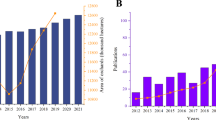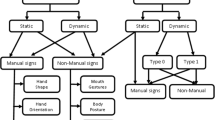Abstract
In the process of steel plate slab production, it is necessary to identify the spray mark characters of the moving steel plates on the production line in real time. A real-time online recognition system based on paddle-OCR for steel slab spray mark characters is designed to address the security problems of manual recognition. The system adopts a high-sensitivity industrial camera to capture images, and its front end adds an optical light filter and a neutral density filter to solve the complex lighting environment and image sensor oversaturation problems in steel factories. The camera temperature control protection system is self-made to ensure that the camera can be used normally in the high-temperature environment of the steel factory. In terms of software, a four-thread synchronous online identification method is designed according to the system real-time requirements. Among them, the method of acquiring region of interest (ROI) images of the moving steel plate slab is designed, that is, for each piece of steel plate that enters the field of view, three frames of the complete character region ROI image are cropped. The Paddle-OCR character recognition algorithm is then used to recognize the three ROI images, and the result with the highest recognition rate is used as the output. The system has been operating stably in the steel factory for more than one year, recording its positive rate and detection rate on a weekly basis. Up to now, the minimum weekly positive rate is 91.2\(\%\) and the minimum weekly detection rate is 98.7\(\%\), which is better than the requirements of the plant, and the software processing rate is 30 frames per second (fps), which meets the online identification requirements.














Similar content being viewed by others
Code Availability
The source code and the image data involved in the project have been published on: https://github.com/TTFriday/character-recognition
References
Caldeira, T., Ciarelli, P. M., & Neto, G. A. (2020). Industrial optical character recognition system in printing quality control of hot-rolled coils identification. Journal of Control, Automation and Electrical Systems, 31(1), 108–118. https://doi.org/10.1007/s40313-019-00551-1
Fan, Z. G. (2013). Development of testing equipment for diffused light of automatic welding filters. Tianjin University.
Ge, J., Liu, L., Sun, J., Zhao, H., Zhou, L., Cheng, T., & Xiao, C. (2021). Automatic recognition of hot spray marking dot-matrix characters for steel-slab industry. Journal of Intelligent Manufacturing. https://doi.org/10.1007/s10845-021-01830-y
Govindan, V. K., & Shivaprasad, A. P. (1990). Character recognition-a review. Pattern Recognition, 23(7), 671–683.
Jain, A., Gupta, J., Khandelwal, S., & Kaur, S. (2021). Vehicle license plate recognition. Fusion: Practice and Applications, 4(1), 15–21.
Jiang, W. (2013). The application of image recognition based on bp neural networks in automatic steel rolling. Advanced Materials Research, 764, 161–164. https://doi.org/10.4028/www.scientific.net/AMR.764.161
Koo, G., Yun, J. P., Choi, H., & Kim, S. W. (2021). Unified deep neural networks for end-to-end recognition of multi-oriented billet identification number. Expert Systems with Applications, 168(114), 377. https://doi.org/10.1016/j.eswa.2020.114377
Lee, S. J., & Kim, S. W. (2017). Localization of the slab information in factory scenes using deep convolutional neural networks. Expert Systems with Applications, 77, 34–43. https://doi.org/10.1016/j.eswa.2017.01.026
Lei, X. (2020). Design and performance simulation of modern automobile and automatic navigation control system. Journal of Physics: Conference Series. https://doi.org/10.1088/1742-6596/1544/1/012084
Li, J., Huang, T., Yang, Y. and Xu, Q. (2020). Detection and recognition of characters on the surface of metal workpieces with complex background. In Proceedings of 2020 IEEE 4th information technology, networking, electronic and automation control conference, Chongqing, China. https://doi.org/10.1109/ITNEC48623.2020.9085200
Li, S. Z., & Jain, A. (2009). Quantum efficiency (QE). Springer.
Long, S., He, X., & Yao, C. (2021). Scene text detection and recognition: The deep learning era. International Journal of Computer Vision, 129(1), 161–184. https://doi.org/10.1007/s11263-020-01369-0
Nasiri, S., Amirfattahi, R., Sadeghi, MT., et al. (2017). A new binarization method for high accuracy handwritten digit recognition of slabs in steel companies. In Iranian conference on machine vision and image processing, MVIP, Isfahan, Iran. https://doi.org/10.1109/IranianMVIP.2017.8342364
Nikitin, I. S. & Usachev, Y. A. (2017). Research of recognition algorithm for sheet metal marking. In Proceedings—2017 2nd international ural conference on measurements, UralCon 2017, Chelyabinsk, Russia. https://doi.org/10.1109/URALCON.2017.8120699
Otsu, N. (2007). A threshold selection method from gray-level histograms. IEEE Transactions on Systems, Man, and Cybernetics, 9(1), 62–66.
Paddle-developers (2021) Paddle. https://github.com/paddlepaddle/paddle
Sadiq, M. J., Prof, A., Kaleem, A., et al. (2021). Content based image retrieval system using k-means and knn approach by feature extraction. International Journal of Computer Science and Communication Networks, 5(6), 391–399. https://doi.org/10.13140/RG.2.2.32255.84647
Shao, J., He, A. R., Dong, G. D., et al. (2020). Whole process quality management and control system of iron and steel based on industrial interconnection. Metallurgical Industry Automation, 44(11), 8–16.
Sharp, G. D. & Mcgettigan, A. D. (2019). Wide angle variable neutral density filter. AU2018230767A1.
Xiang, Z., You, Z., Qian, M., Zhang, J., & Hu, X. (2018). Metal stamping character recognition algorithm based on multi-directional illumination image fusion enhancement technology. EURASIP Journal on Image and Video Processing. https://doi.org/10.1186/s13640-018-0321-7
Zhao, Q. J., Cao, P., & Tu, D. W. (2014). Toward intelligent manufacturing: label characters marking and recognition method for steel products with machine vision. Advances in Manufacturing, 2(1), 3–12. https://doi.org/10.1007/s40436-014-0057-2
Zhao, Q. J., Huang, C. H., Ke, Z. N., & Yi, J. G. (2017). Recognition results classification and post-processing methods for painted characters on billet surface. Advances in Manufacturing, 5(3), 261–270. https://doi.org/10.1007/s40436-017-0190-9
Acknowledgements
The Natural Science Foundation of Hubei Province.
Author information
Authors and Affiliations
Corresponding author
Ethics declarations
Conflicts of interest
The authors declare no conflicts of interest.
Additional information
Publisher's Note
Springer Nature remains neutral with regard to jurisdictional claims in published maps and institutional affiliations.
Rights and permissions
Springer Nature or its licensor (e.g. a society or other partner) holds exclusive rights to this article under a publishing agreement with the author(s) or other rightsholder(s); author self-archiving of the accepted manuscript version of this article is solely governed by the terms of such publishing agreement and applicable law.
About this article
Cite this article
Peng, Q., Tu, L. Paddle-OCR-Based Real-Time Online Recognition System for Steel Plate Slab Spray Marking Characters. J Control Autom Electr Syst 35, 221–233 (2024). https://doi.org/10.1007/s40313-023-01062-w
Received:
Revised:
Accepted:
Published:
Issue Date:
DOI: https://doi.org/10.1007/s40313-023-01062-w




